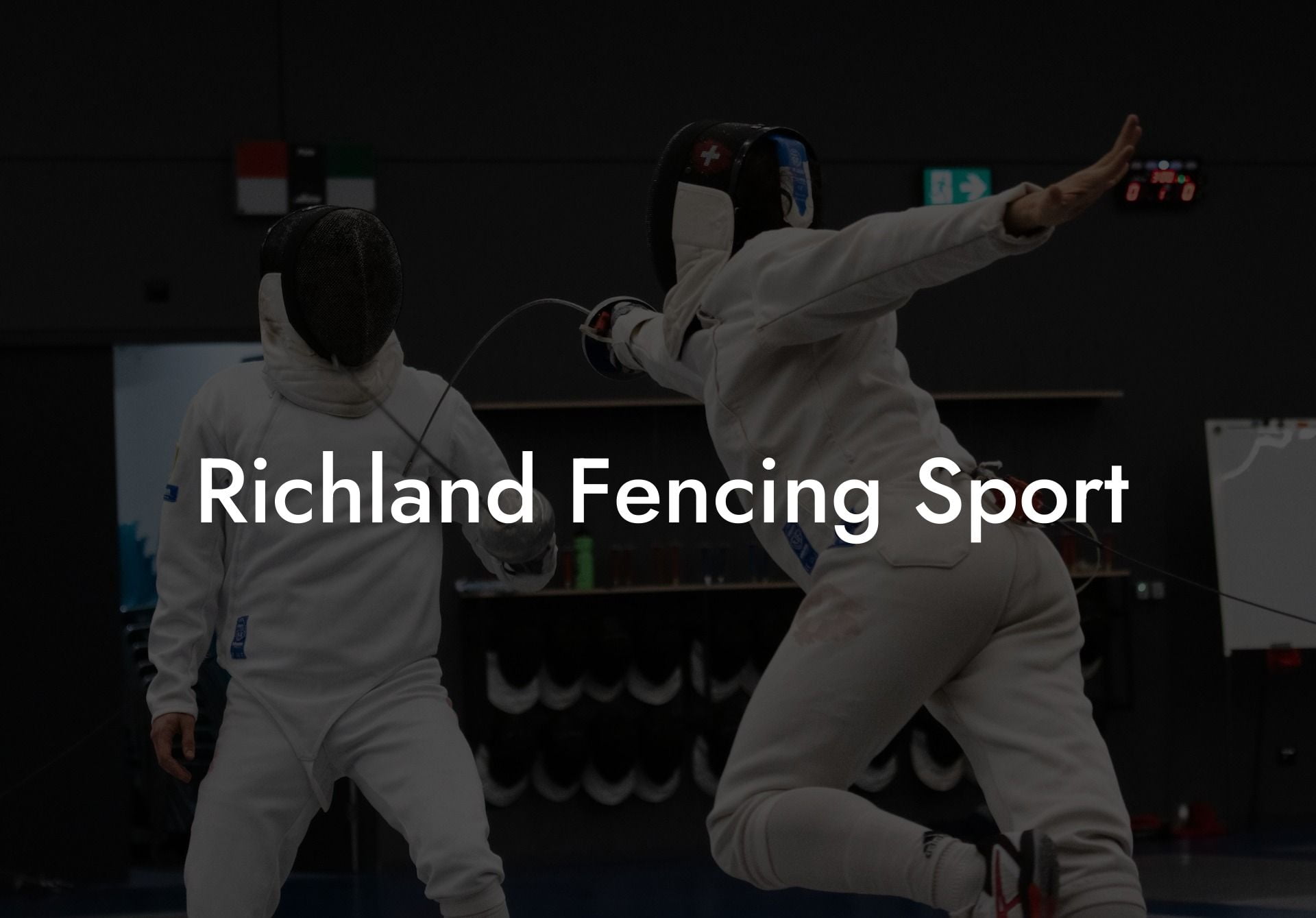Discover the exciting world of Richland fencing, a unique and growing sport that is not only a test of physical endurance, but also a display of mental prowess. In this comprehensive guide, we’ll explore everything you need to know about Richland fencing sport, including its history, rules, and techniques. Join us as we delve into this thrilling world and find out why Richland fencing is gaining popularity among sports enthusiasts!
Richland Fencing Sport Table of Contents
History of Richland Fencing Sport
Richland fencing sport has its origins in the ancient art of swordsmanship. Throughout history, various forms of fencing have been practiced around the world, with each culture developing its unique styles and techniques. Richland fencing, in particular, gained prominence in Europe, where it evolved from a practical form of self-defense to a refined and disciplined sport.
Rules and Regulations
Richland fencing sport adheres to a specific set of rules and regulations to ensure fair play and safety for all participants. Some of the most important rules include:
Fencers and Equipment
- Each fencer must wear a protective mask, jacket, gloves, and plastron
- Competitors may choose from three fencing weapons: foil, epee, or saber
- Each weapon has its unique set of rules and scoring system
The Fencing Strip
- The competition area, or fencing strip, measures 14 meters long and 1.5-2 meters wide
- It is divided into three sections: on-guard lines, warning lines, and rear lines
- The fencers must remain within the boundaries of the strip during the bout
Scoring and Timekeeping
- Points are awarded for hitting the opponent within the valid target areas
- Each bout has a set time limit and is divided into three periods, with breaks in between
- The first fencer to score 15 points or the one with the most points at the end of the time limit wins the bout
Basic Techniques and Stance
The fundamental techniques of Richland fencing sport require a combination of agility, precision, and strategic thinking. Some of the essential skills and stance that fencers need to master include:
The En Garde Stance
The en garde stance is the starting position for all fencers. It involves placing the feet perpendicular to each other, with the front foot pointing toward the opponent and the back foot at a 90-degree angle. The knees should be slightly bent, with the weight evenly distributed between both legs.
Footwork
Effective footwork is crucial for maintaining balance and control during a bout. Some common footwork techniques are the advance, retreat, and lunge. These moves enable fencers to close or open distance, as well as execute attacks and defenses.
Attacks and Defenses
A fencer can execute various attacks, such as the simple attack, compound attack, and counter-attack. There are also multiple defensive moves like the parry and riposte, which allow fencers to block and counter an opponent's attack.
Richland Fencing Sport Example:
Imagine a Richland fencing sport bout between two skilled competitors, each wielding a foil. The fencers begin in the en garde stance and advance cautiously, examining each other's strengths and weaknesses. One fencer lunges, attempting to strike their opponent's torso, but the other quickly parries the attack and ripostes, scoring a point. The bout continues with intense exchanges of attacks and defenses until one fencer reaches the required 15 points, claiming victory.
Now that you have a better understanding of Richland fencing sport, it's clear why this captivating and strategic activity is gaining the interest of sports enthusiasts everywhere! Not only does it provide a great workout, but it also challenges the mind, making it a unique and fulfilling sport experience. Interested in learning more about fencing and discovering the best equipment to suit your needs? Explore our other articles and guides on Anchorage Fencing Club to dive deeper into this fascinating world of fencing!













